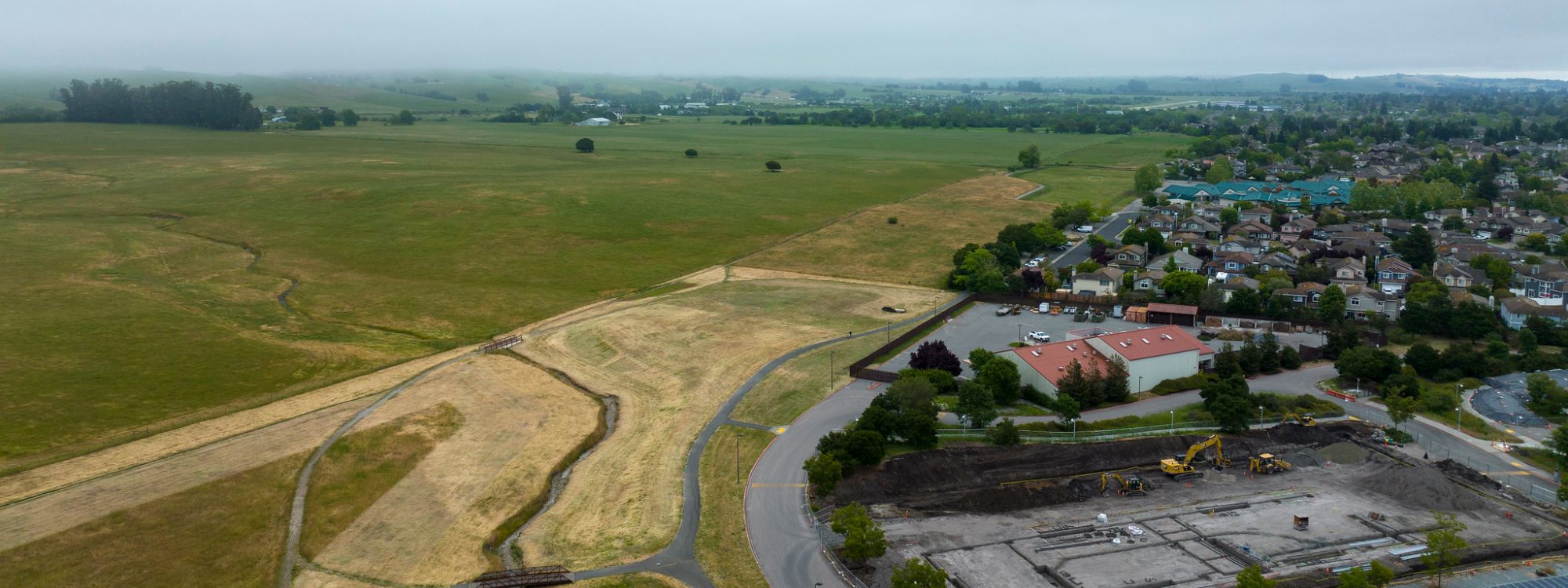Updated in October 2023. Originally published on June 20, 2023.
In a significant win to unlock more housing in California, Governor Gavin Newsom signed the landmark housing legislation Senate Bill 423 (SB423) into law. Greenbelt Alliance celebrates the extension of this pivotal affordable housing law, for which we advocated for alongside many other housing and environmental organizations.
SB423 builds on Sen. Wiener’s 2017 bill, SB 35, by extending it to 2036, applying its provisions to more mixed-income housing projects, and including requirements that construction workers receive prevailing wages. By signing this bill, Governor Newsom has made it clear that he supports making it faster, easier, and less expensive to build affordable homes in our coastal cities.
Context
Since the 1970s, Greenbelt Alliance has recognized that shifting our existing harmful land use patterns from exurban sprawl to urban infill is essential to preserving open space, protecting habitat and biodiversity, and providing enough housing for those who want to call the Bay Area home.
Unfortunately, significant barriers to infill housing have persisted and California’s foolhardy development patterns are fueling the climate crisis— 38% of California’s greenhouse gas emissions come from the transportation sector, a direct result of sprawl, which requires automobile usage to accomplish most daily tasks. If we are serious about meeting our climate goals, it is imperative that we shift how, and, critically, where we build.
In order to help facilitate the infill housing California so badly needs to shift our land use patterns and address our housing and climate crises, we must get serious about removing the biggest roadblocks to creating new multi family homes in the right places. In pursuit of this goal, Greenbelt Alliance endorsed Senate Bill 423. This important piece of legislation by Senator Scott Wiener extends and expands upon the provisions of prior successful legislation from 2017 (Senate Bill 35), which allows new infill housing projects that meet existing zoning requirements to bypass additional local review requirements if a city or county is not meeting their state mandated housing targets.
Below, we answer some key questions about how SB423 works, what it does, and why it’s important:
What problem does SB423 solve, and how?
Cities plan for needed new housing through updated planning and zoning maps designating where new housing is permitted. However, one of the biggest barriers to new infill housing construction are the delays caused by subjective planning processes that are layered on top of rezoning efforts. Things like design review hearings, neighborhood meetings, and more can extend the timeline for new infill homes by many years, while privileging the voices of existing homeowners.
SB423 allows infill housing to bypass those discretionary requirements, leaving only objective standards like health and safety considerations, making it much faster and simpler to build the housing we need, where we need it, right now.
What conditions must be met for a project to be able to utilize SB423 streamlining?
Though SB423 streamlines the process for new housing, many conditions must be met at the outset in order for a development to qualify. Key provisions include the following:
- The project must be in a city that includes an urbanized area or urban cluster, or an unincorporated area where the parcels in question are wholly within the bounds of an urbanized area or cluster.
- At least 75% of the project must adjoin parcels already developed with urban uses.
- The project must be in a city or county that is not currently meeting their state-mandated housing (RHNA) targets. If a city is meeting their market rate targets, but not their affordable targets, projects that are 50% affordable qualify for streamlining. If the project is meeting neither, a project that is 10% affordable qualifies for streamlining.
- If a project is proposed in a city or county without a state-certified housing element, it is eligible for SB423 streamlining.
- The project site must already be zoned for multifamily housing; no sprawl allowed!
Does SB423 include any open space or sensitive habitat protections?
Yes. In recognizing that there are many places where new housing, including new infill housing, should not go, the bill cannot be used to build on prime farmland, or land zoned or designated for agricultural protection or preservation by a local ballot measure.
Additionally, the bill cannot be used to build on habitat for any protected species identified as candidate, sensitive, or species of special status by state or federal agencies, fully protected species, or species protected by the federal Endangered Species Act, the California Endangered Species Act, or the Native Plant Protection Act, unless the development within the habitat has been authorized by a permit or approval issued pursuant to federal or other state law.
The bill also excludes lands identified for conservation in an adopted natural community conservation plan pursuant to the Natural Community Conservation Planning Act, as well as lands under conservation easement.
Does SB423 allow building on wetlands?
SB423 only allows building on land already zoned by the local jurisdiction. SB423 cannot be used to build housing on wetlands, unless the development within the wetlands has been authorized by a permit or other approval issued pursuant to federal or other state law. Greenbelt Alliance continues to advocate at the local level to prevent zoning for housing in wetlands and other sensitive habitat. Additional amendments to SB 423 to protect against wetland development are forthcoming.
What about areas at risk of wildfire?
SB423 cannot be used to build within a very high fire hazard severity zone, as determined by the Department of Forestry and Fire Protection pursuant to Section 51178, or within a high or very high fire hazard severity zone as indicated on maps adopted by the Department of Forestry and Fire Protection pursuant to Section 4202 of the Public Resources Code.
How does SB423 intersect with the Coastal Zone?
Unlike its predecessor, SB423 extends to and includes the coastal zone, allowing new infill housing to be streamlined there as well. We view this as a welcome and positive component of the bill rather than as a cause for concern. There is some misunderstanding about what land is included in the coastal zone. While protection of coastal resources is incredibly important, so too is expanding coastal access via the production of affordable housing. Many areas in the Coastal Zone include high resource urban communities with temperate climates, such as Santa Monica, Coronado, Santa Cruz, and Venice, to name a few—places that are not just appropriate, but ideal, for new housing growth.
Unfortunately, the Coastal Commission has repeatedly stymied affordable housing construction in recent years, including just last week, when they voted down an effort to exempt 100% affordable housing from parking requirements in Long Beach, prioritizing parking for drivers over housing for human beings.
SB423 will help reverse this trend, bringing affordability and increased access to coastal communities, in the very spirit of the Coastal Act. Through its carefully crafted limitations on where and how it can be used, the bill is designed to allow for both the affordable housing construction that we need, while ensuring environmentally sensitive areas in the coastal zone remain protected.
What makes SB423 so critical from a climate and environmental perspective?
Last year California built 123,000 new homes, a far cry from the 310,000 per year that the state says is necessary to meet our housing needs. Of particular concern for environmentalists, however, is that of those homes, more than 54% are sprawl, rather than infill, in direct contradiction with growth strategies we know we must pursue in order to meet GHG emission reduction targets. Even more worryingly, the largest percentage gains of new units were in inland cities, the Central Valley, and agricultural areas.
Attempting to stop harmful developments that consume open space, threaten sensitive habitat and biodiversity, and imperil our climate goals by opposing individual projects simply isn’t enough. We must address the root issue driving sprawl development in the first place: a lack of available infill housing. SB423 does just that; it is thoughtful, nuanced, and effective legislation that will allow California to make significant progress on addressing our worsening housing and climate crises, while protecting our environment for generations to come.
Photo of Santa Rosa by Karl Nielsen/Greenbelt Alliance





